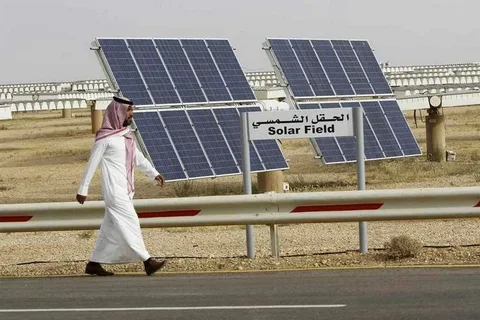Introduction
The Saudi Arabia Renewable Energy Market is experiencing rapid growth as the Kingdom pivots from its traditional oil-based energy model to a diversified and sustainable energy portfolio. With its Vision 2030 initiative, Saudi Arabia aims to generate 50% of its energy from renewable sources, focusing primarily on solar, wind, and green hydrogen. The market encompasses utility-scale solar farms, onshore and offshore wind projects, and emerging technologies in hydrogen production.
Market Drivers
One of the main drivers is the government’s aggressive renewable energy targets under the National Renewable Energy Program (NREP). The Kingdom is leveraging its abundant solar irradiance and large land availability to develop massive solar and wind projects. Decreasing costs of solar PV and wind turbine technologies also make renewables more competitive with conventional energy sources.
International partnerships and investments are accelerating project development. Companies from Europe, the U.S., and Asia are collaborating with Saudi entities to bring advanced technologies, expertise, and financing into the renewable energy space. Additionally, rising domestic electricity demand and the need to reduce carbon emissions are pushing the transition toward cleaner energy.
Market Challenges
Despite the positive outlook, challenges include high upfront capital expenditure for large-scale projects and the intermittency of solar and wind energy, which requires robust storage solutions. Harsh environmental conditions, including extreme heat and dust, can affect equipment performance and maintenance schedules. Regulatory complexities and the need for skilled personnel in renewable technologies are other notable obstacles.
Opportunities
Saudi Arabia’s renewable sector presents opportunities in green hydrogen production, where solar energy is used to electrolyze water to produce hydrogen. The country also plans to expand hybrid renewable systems integrated with storage, ensuring grid stability. Small-scale distributed solar solutions for residential and commercial use represent another growth area, enabling decentralized energy access. Additionally, exporting renewable energy technologies and expertise to neighboring GCC countries offers market expansion potential.
Regional Insights
Solar energy dominates the market due to the high solar irradiance in central and northern regions. Wind energy projects are concentrated in coastal areas with favorable wind conditions, while emerging hydrogen initiatives are primarily located near industrial hubs. Key cities like Riyadh and NEOM are becoming renewable energy innovation centers, attracting foreign investment and technology deployment.
Future Outlook
The Saudi Arabia Renewable Energy Market is expected to grow steadily over the next decade, driven by government initiatives, declining technology costs, and international partnerships. Integration of energy storage solutions, digital monitoring, and smart grid infrastructure will enhance the reliability of renewable installations. The focus on green hydrogen will further diversify the market, positioning Saudi Arabia as a global player in sustainable energy.
Conclusion
Saudi Arabia’s renewable energy market is a critical component of the Kingdom’s energy transformation strategy. With ambitious targets, international collaborations, and technology adoption, the market is poised for substantial growth. Investments in solar, wind, and hydrogen energy will drive economic diversification while promoting sustainability and reducing carbon emissions.




